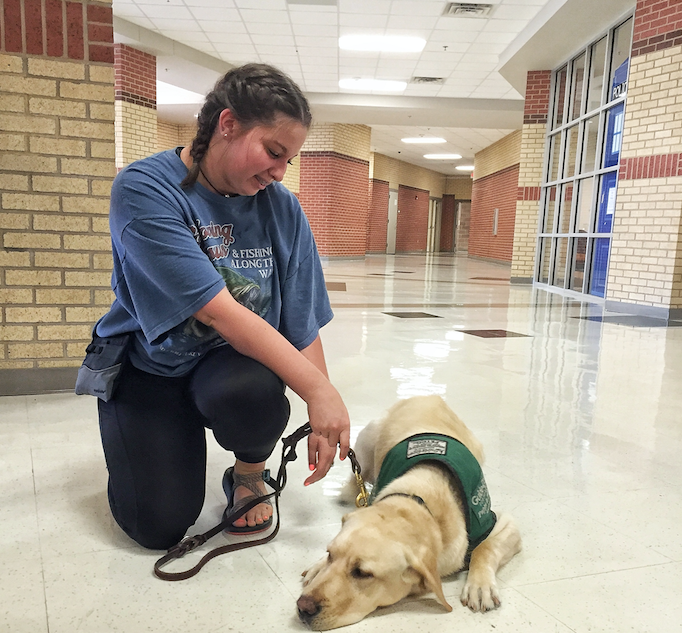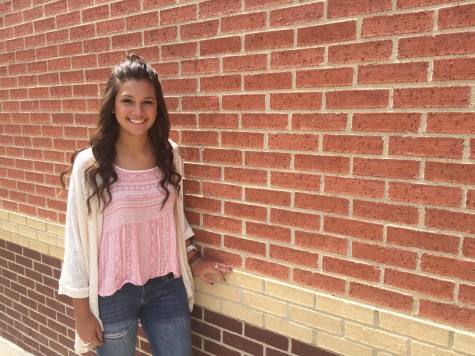Canines on campus
Students train guide dogs for the blind
Junior Katie Sawyers with the guide dog named Salem. Salem will stay in Texas for basic training until he is 14-18 months old and then will complete his training on a Guide Dogs for the Blind campus.
May 26, 2016
When strolling through the halls on campus, many people quickly notice four-legged friends walking alongside students and staff. Countless hours are poured into training and preparing these puppies for their evaluation to become guide dogs for the blind.
The parent organization has two campuses: the main one is in San Rafael, Calif., and another one in Boring, Ore. The puppies are bred and whelped on campus, and then they are flown out to the raisers in Texas at 8-weeks-old. Guide Dogs for the Blind pays for the transportation to and from the main campus, as well as veterinary expenses of all the puppies. All the puppy raisers have to provide food, toys, and a kennel.
“Our Lovejoy puppy club started this past November and I hold the position of ‘Student Leader.’ This means that I get to help teach and mentor the raisers and puppies that come through Lovejoy,” junior Sophie Herran said. “It is an awesome role because I get to work so closely with kids that share the same passion as me.”
One struggle many of the raisers face is when people pet the puppies without asking because it distracts the dogs from the work they are doing.
“Everyone should always ask the raiser if they can pet the puppy,” co-leader Jeanne Fowler said. “I think it would be helpful for the puppies to be pet by others and feel happy at school, but this only works if people ask first because some of the dogs aren’t ready.”
The trainers keep the puppies from 8-weeks-old to 14-18 months. However, some of the volunteers are puppy-sitters, meaning that they only take puppies for a couple days/weeks if the raiser is out of town.
“The puppies are with us from the time that they are two months old until they are roughly 14-18 months old,” Herran said. “During this time, we teach them 13 commands, socialization, and proper house behavior. Once they go back to campus for formal training, they begin guide work. This includes leading someone through a busy city, around obstacles, and providing safety for the visually impaired.”
When training the dogs, the raiser must maintain control of the dog at all times, which includes many different types of corrections.
“Guide Dogs for the Blind has been moving towards positive reinforcement which means that we have been using less corrections and way more positive training,” Herran said. “This means more praise, both verbal and using food. It has shown to be very effective in the latest puppies that have gone back to campus. We can’t wait to keep learning new ways to train these pups.”





